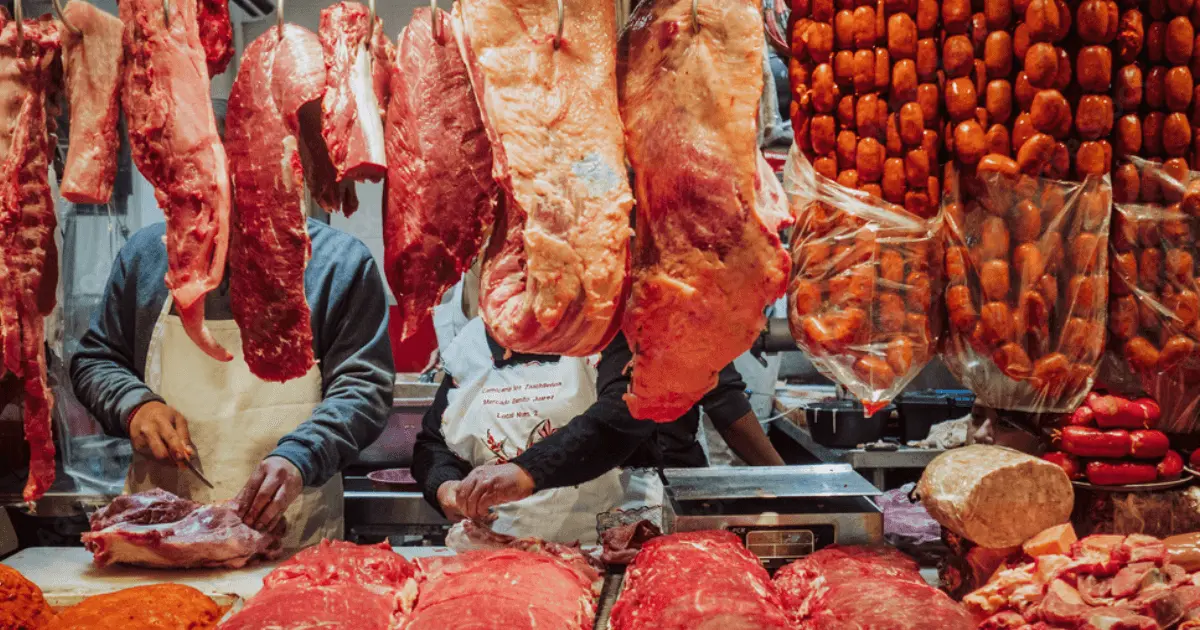What Makes Bagley Farms Meat Market Edwardsville IL Stick Out for Meat Lovers
What Makes Bagley Farms Meat Market Edwardsville IL Stick Out for Meat Lovers
Blog Article
Reveal the Art of the Butcher's Cut in a Modern Meat Market
In the ever-evolving landscape of contemporary meat markets, the butcher's cut has actually transcended its conventional origins, merging age-old workmanship with modern methods. What really establishes the contemporary butcher apart is their ability to create a deeper link between customers and the origins of their meat.
Advancement of Butchery Methods
The evolution of butchery methods reflects an abundant tapestry of innovation and adjustment driven by innovations in technology, modifications in customer need, and a much deeper understanding of meat science. Historically, butchery was a craft gave via generations, with techniques sharpened over centuries to optimize return and flavor. The industrial revolution ushered in automation, transforming typical practices and making it possible for large handling.
The mid-20th century saw butchery strategies additionally refined by scientific understandings into muscular tissue biology and meat aging, enhancing both inflammation and preference. Developments like vacuum packaging and refrigeration prolonged product shelf-life, permitting butchers to diversify offerings and enhance quality control. This duration additionally noted the rise of customized tools, such as band saws and meat slicers, which enhanced precision and efficiency in meat handling.

The 21st century has presented digital technology right into the butchery world. Electronic systems currently help in monitoring pet provenance and enhancing cuts to meet details customer preferences. In addition, a renewal in artisanal butchery has actually arised, blending standard skills with modern knowledge to satisfy consumers seeking moral and sustainable meat options. This evolution highlights a vibrant interaction between practice and technology, meeting modern demands while maintaining the craft's heritage.
Recognizing Meat Cuts
Comprehending the ins and outs of meat cuts is necessary for both butchers and customers seeking high quality and value. Each cut comes from a different component of the animal, passing on unique tastes, structures, and cooking approaches - bagley farms meat market edwardsville il. Proficiency of these distinctions not only improves cooking experiences however likewise makes best use of the utility of each carcass. For butchers, accurate cuts show skill and respect for the craft, guaranteeing minimal waste and ideal yield.

Comprehending muscle mass structure is vital; muscle mass used a lot more often by the animal have a tendency to be tougher and are best fit for sluggish food preparation techniques, while less-used muscle mass, like those found in the loin, are more tender and perfect for grilling or roasting. Familiarity with these differences encourages customers to make educated options, enhancing their cooking undertakings.
Selecting Quality Meat
Picking the appropriate meat includes more than simply picking a visually enticing item from the screen. The art of selecting quality meat needs a critical eye and knowledge of details qualities that indicate quality and excellence.
Second of all, take into consideration the marbling, which refers to the white streaks of fat within the muscle mass. Correct marbling is an essential indication of tenderness and taste, as it thaws during food preparation, improving the meat's juiciness. Remember, higher marbling usually associates with premium top quality cuts, such as USDA Prime.
Texture is another vital element; meat should really feel solid to the touch, not slimed or excessively soft. Additionally, bear in mind the scent. Fresh meat ought to have a clean, neutral smell, devoid of any type of sour or repulsive odors.
Pairing Cuts With Cooking Approaches

Conversely, harder cuts like brisket and chuck roast are rich in collagen, which breaks down into gelatin when cooked gradually. These cuts are excellent for braising or slow-moving roasting, allowing the meat to soften over time and establish deep, complex tastes. Cuts such as brief ribs and pork shoulder fare well with slow-cooking techniques, where expanded cooking times transform their durable structures into delicious important source dishes.
Lamb shanks and oxtail, which need extended cooking to tenderize, are excellent prospects for stewing or slow simmering. These methods coax out rich, passionate tastes while maintaining wetness. By recognizing the distinct characteristics of each cut, cooks and home cooks alike can boost their cooking developments, making sure each meal is both satisfying and unforgettable.
The Butcher's Duty Today
Navigating the evolving landscape of the modern meat market, the butcher's role today prolongs past simple prep work of cuts. Contemporary butchers are cooking artisans, educators, and advocates for lasting methods.
Along with crafting accurate cuts, butchers currently involve directly with clients, offering cooking recommendations and customizing choices to suit private demands and choices. Their proficiency in meat aging, marbling, and taste profiles empowers customers to make enlightened decisions, boosting their culinary experiences. This customized solution exemplifies the butcher's progressing duty as a go to the website trusted consultant in the kitchen area.
Additionally, butchers are pivotal in decreasing waste, making use of entire pets to develop varied items such as sausages and stocks. This thorough method not just appreciates the animal however likewise aligns with contemporary sustainability objectives. By doing this, the modern butcher embodies both tradition and advancement, adapting to an ever-changing market while protecting the virtuosity and honesty of their craft.
Verdict
The contemporary butcher's craft elaborately weaves traditional methods with contemporary developments, stressing sustainable practices and ethical sourcing. Proficiency in recognizing diverse meat cuts and top quality signs encourages butchers to give enlightened suggestions, lining up certain cuts with optimal food preparation approaches. This knowledge not only raises cooking experiences yet additionally strengthens the connection between customers and the beginnings of view their food. By recognizing historical techniques while embracing contemporary needs, the butcher's function remains important in today's advanced meat market (bagley farms meat market edwardsville il).
Report this page